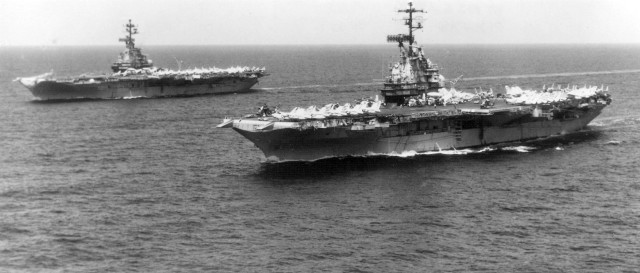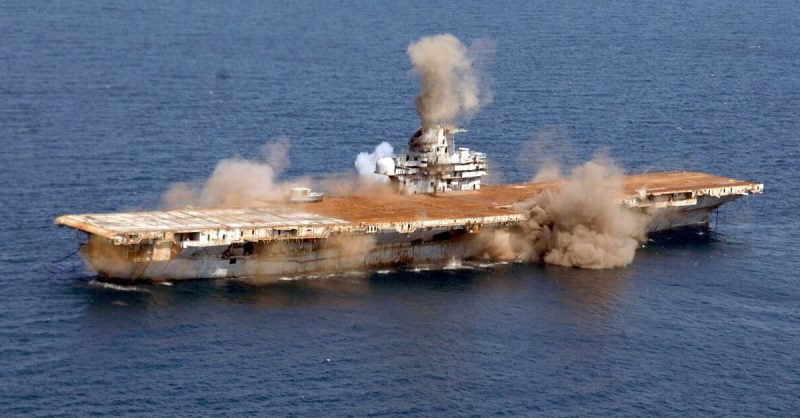The USS Oriskany had a long and varied time in service before it finally found its resting place as an artificial reef. Named after a battle in the American Revolutionary War, she is today considered one of the best wreck diving sites in the world. In 2006, under carefully controlled conditions, she was deliberately sunk off the coast of Florida.
She was a long-hulled Essex-class aircraft carrier, and was constructed for service in the Second World War. However, the war was over by the time she was launched in 1946.
The Oriskany underwent a number of drastic changes before it was officially commissioned. The vessel’s construction was suspended while it was only 85% finished. A large portion of the ship was then redesigned and torn down to be only 60% complete.
As the years passed, aerial technology was being updated and improved. With this in mind, it was decided that the Oriskany should be redesigned to accommodate new planes. To achieve this, the main flight deck was reinforced considerably. Better hydraulic catapults and elevators were built into the ship’s design, and the addition of blisters on the hull improved the vessels buoyancy and stability at sea.
Eventually, the new and improved Oriskany was finished. The vessel was finally commissioned at the New York Naval Shipyard in 1950, on the 25th of September. Though she had originally been intended for use during the Second World War, it was not until five years after that conflict ended that the Oriskany entered active service.
She spent much of her time up until the 1970’s deployed throughout the Pacific Ocean, and won two battle stars for service in the Korean War. During the Vietnam War, she won a further five battle stars.

In 1966 there was a terrible fire on board the Oriskany, resulting in the death of 44 servicemen. A magnesium flare exploded, causing the tragic incident. Investigating the event afterwards, authorities concluded that it was not a malfunction, but rather a case of human error.
Apparently, a seaman had lit the flare by accident and then, panicking, had thrown it into the weapons locker where the other flares were stored. This then lit the numerous flares around it, with disastrous consequences. Many of the men who died that day were combat pilots who had returned only hours earlier from daring raids over Vietnam.
That death toll could have been even higher, however, had it not been for the heroic efforts of the crew. Putting themselves at extreme risk, many of them rushed to fight the fire, moving bombs out of the flames’ reach and rescuing pilots from danger. Other aircraft carriers also came to their aid, with the Constellation and Franklin D. Roosevelt bringing vital medical assistance to the Oriskany and her crew.
The Oriskany was decommissioned in 1976. The Navy wished to sell her for scrap, but when it appeared that the deal would not go through other plans had to made.

It was decided that the carrier should be sunk off the coast of Florida. To this day the Oriskany sits upright on the bottom of the ocean as an artificial reef. Any substances that might have caused harm to the natural sea life and environment around her were carefully removed from the vessel. Today, divers enjoy visiting her regularly, while photos and videos of her sunken form still display the ship’s striking size.
In fact, the Oriskany is the biggest ship ever to be sunk as an artificial reef. In this video, viewers can witness the incredible moment that this enormous vessel was finally sent beneath the waves.
https://www.youtube.com/watch?v=XavoiJxK0ck&feature=youtu.be
